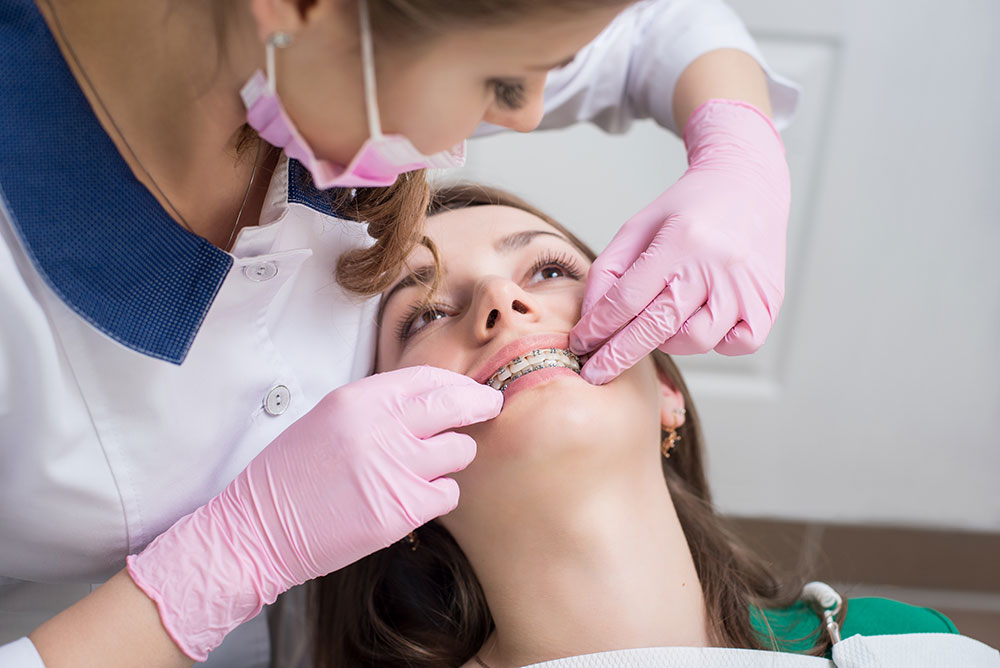The 5-Second Trick For Legacy Orthodontics
The 5-Second Trick For Legacy Orthodontics
Blog Article
A Biased View of Legacy Orthodontics
Table of Contents5 Simple Techniques For Legacy OrthodonticsSee This Report on Legacy OrthodonticsThe Only Guide to Legacy OrthodonticsLegacy Orthodontics Fundamentals ExplainedLittle Known Questions About Legacy Orthodontics.
In enhancement, we provide adjustable therapy schedules, flexible repayment alternatives and a fun, pleasurable experience.An orthodontist is a dental practitioner trained to detect, protect against, and treat teeth and jaw abnormalities. They correct existing conditions and are educated to recognize issues that may create in the future. Orthodontists collaborate with people of every ages, from children to grownups. People often connect a perfect smile with health.
Malocclusion, or misaligned teeth, can lead to oral problems, consisting of dental caries, gum tissue illness, and hard or excruciating chewing. Yet not every person is birthed with straight teeth. If you have a bad bite or huge spaces in between your teeth, you may wish to consult a dental practitioner specializing in orthodontic care.
Legacy Orthodontics - An Overview
( Photo Credit History: DigitalVision/Getty Images) Orthodontists use fixed and detachable oral gadgets, like braces, retainers, and bands, to alter the placement of teeth in your mouth. Orthodontic treatment is for dental abnormalities, including: Jagged teethBite issues, like an overbite or an underbiteCrowded teeth or teeth that are too far apartJaw misalignmentThe objective of orthodontic treatment is to boost your bite.
A healthy bite guarantees you can eat, chew, and talk effectively. While you might consider orthodontists as primarily for youngsters or teens who require braces, they can deal with dental issues at any kind of age. Orthodontists go to university, dental college, and orthodontic institution. After college graduation, they spend 2 or 3 years in an orthodontic residency program.
, yet not all dental practitioners are orthodontists. They focus on two areas: Just how to properly and safely move teeth How to properly direct growth in the teeth, jaw, and faceOnce an orthodontist has finished training, they have the option to come to be board licensed.
The Ultimate Guide To Legacy Orthodontics
Imbalance, or malocclusion, is one of the most usual reason individuals see an orthodontist. It is hereditary and is the outcome of dimension distinctions between the top and lower jaw or between the jaw and teeth. Malocclusion brings about tooth congestion, a twisted jaw, or irregular bite patterns. Malocclusion is normally treated with: Your orthodontist attaches metal, ceramic, or plastic square bonds to your teeth.
If you have just small malocclusion, you may be able to utilize clear braces, called aligners, rather of traditional dental braces (https://www.video-bookmark.com/bookmark/6545074/legacy-orthodontics/). Some individuals need a headgear to help move teeth right into line with pressure from outside the mouth. After braces or aligners, you'll need to wear a retainer. A retainer is a personalized tool that keeps your teeth in place.
They're frequently used on kids. They can produce additional space in the mouth without having to draw teeth. If you have a severe underbite or overbite, you may need orthognathic surgical procedure (likewise called orthodontic surgery) to lengthen or shorten your jaw. Orthodontists use cords, surgical screws, or plates to support your jaw bone.
You might need to see an orthodontist if you have: Crowding or not adequate space for all of your teethOverbite, when your upper teeth come by your bottom teethUnderbite, when your bottom teeth are also far forwardSpacing or issues with gapsCrossbite, which is when your top teeth fit behind your bottom teeth when your mouth is closedOpen bite or a vertical space between your front bottom and top teethMisplaced midline, when the facility of your base and top teeth do not line up Fixing an oral malocclusion can: Make attacking, eating, and talking easierImprove the symmetry of our face and your overall appearanceEase discomfort from temporomandibular joint disordersDifferent your teeth and make them simpler to cleanse, aiding stop tooth degeneration or dental caries It's frequently a dental professional who first notifications misaligned teeth throughout a routine examination.
Some Of Legacy Orthodontics

Throughout your first orthodontic consultation, you'll likely have: An oral examPhotos taken of your face and smileDental X-raysPanoramic (360 level) X-rays of your face and headImpressions to create mold and mildews of your teethThese examinations will help your orthodontist know how to proceed with your therapy. leesburg orthodontist. An orthodontist is a dental expert that's had training to treat your teeth and jaw
Orthodontists may carry out surgery, exams,X-rays,and more to assist you achieve an extra comfy, healthier smile. An orthodontist is concentrated on your bite, so something like a broken tooth would certainly be handled by a dental expert. Orthodontists are dental experts yet not all dental practitioners are orthodontists. Orthodontists are concentrated on your bite, or the means your teeth fit with each other, and the straightness of your teeth.
Ever wondered exactly how celebrities always appear to have perfectly straightened teeth? Orthodontists are oral specialists who concentrate on dealing with abnormalities in the teeth and jaws.
The Definitive Guide to Legacy Orthodontics

While braces are one of the most generally identified orthodontic treatment, orthodontists have a diverse toolkit at their disposal. The particular technique chosen depends upon the severity of the instance, the client's age, and private preferences. useful source These tried-and-true braces use a system of brackets adhered to the teeth and connected by cords.
These removable trays are tailor-made to considerably change the teeth's setting. In situations of slim jaws, palatal expanders can be made use of to create room for appropriate tooth placement.
Report this page